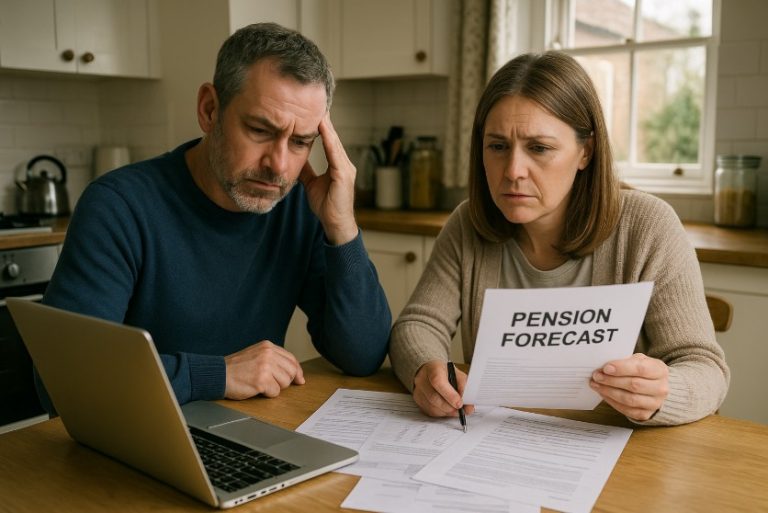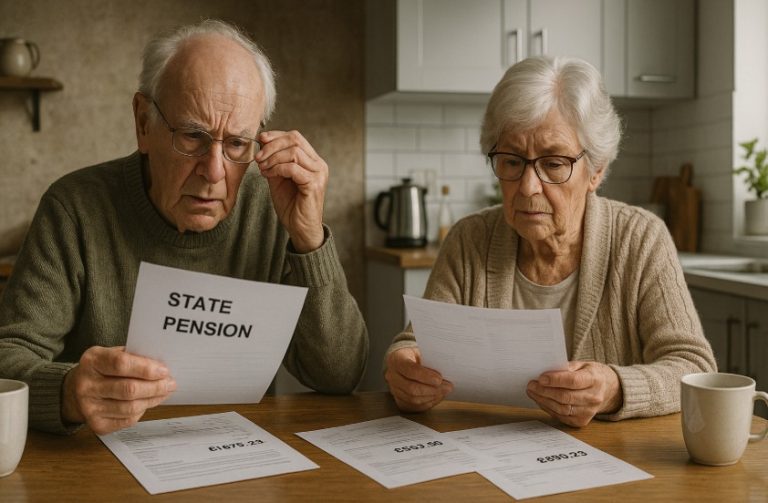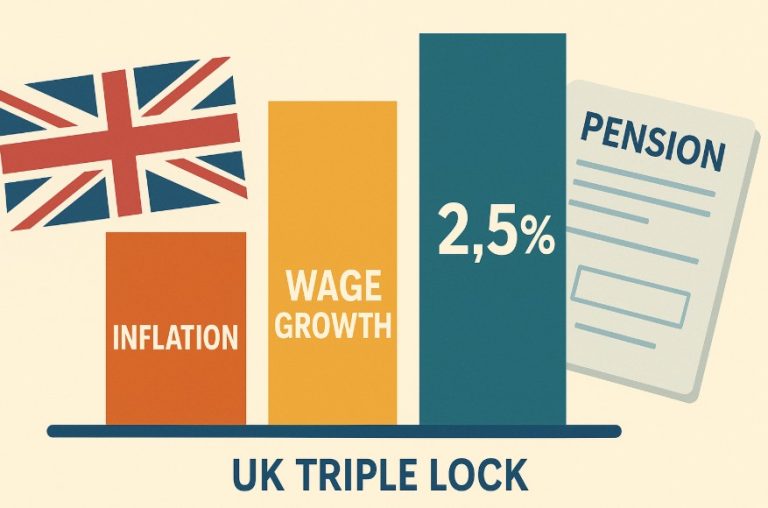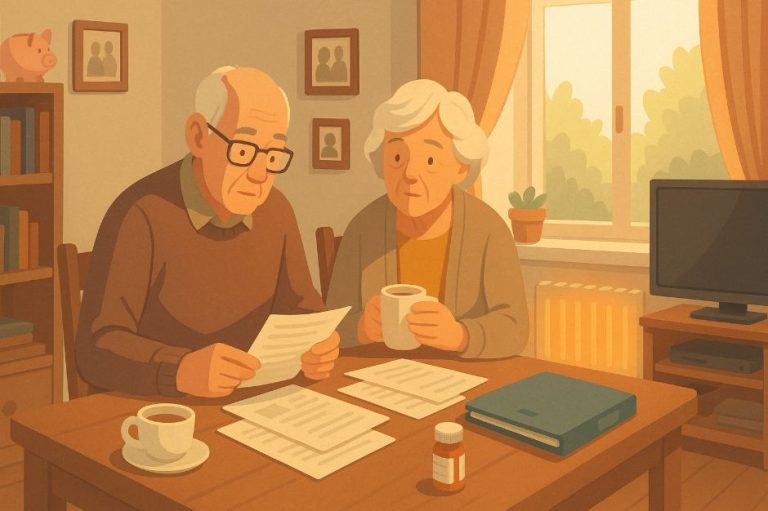State pension reforms have long sparked national debate in the UK, but none more emotionally charged or impactful than the case surrounding Women Against State Pension Inequality (WASPI).
These women, born in the 1950s, have fought tirelessly to expose maladministration by the Department for Work and Pensions (DWP) and their pursuit for fair compensation has now reached a legal turning point.
In a historic decision, the High Court has granted a judicial review into the UK Government’s refusal to compensate WASPI women, potentially reshaping how future compensation claims are handled for large-scale state failures. But is this a sign that justice is finally on the horizon?
What Is the WASPI Campaign?
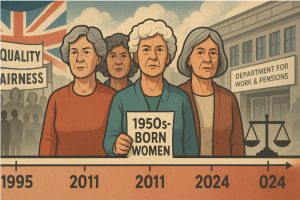
The Women Against State Pension Inequality (WASPI) campaign represents women born in the 1950s who were unfairly affected by the rise in the State Pension age.
These women expected to retire at 60, only to discover that the Government had increased their pension age by up to six years, often without clear or timely communication. As a result, their retirement plans were severely disrupted.
WASPI does not oppose the equalisation of the State Pension age between men and women. The issue at the heart of their campaign is the failure of the Department for Work and Pensions (DWP) to notify women adequately, leaving them without the time or means to prepare financially and emotionally for a later retirement.
Why the Campaign Was Formed?
Many affected women had already left work or reduced their hours in anticipation of receiving their pensions at 60.
The late notification meant they were suddenly expected to work years longer or survive with no income. Some had to sell their homes, rely on Universal Credit, or use up their savings to get by.
In March 2024, the Parliamentary Ombudsman confirmed that the DWP had committed maladministration and that this failure had resulted in clear injustice. The Ombudsman recommended that compensation be provided to reflect the hardship caused.
Despite this, the Government dismissed the findings in December 2024, stating there was no injustice and therefore no compensation would be paid. This decision directly contradicted the Ombudsman’s conclusions and prompted WASPI to initiate a judicial review.
What the Legal Action Seeks to Achieve?
WASPI has already won one judicial review, which led to a more accurate and fair Ombudsman report. The current legal action challenges the Government’s decision to deny compensation.
If the court finds the decision legally flawed, the Government would have to reconsider and issue a new, lawful ruling.
- A successful judicial review would force the Government to withdraw its rejection of the Ombudsman’s report
- It would reopen the path toward justice and compensation for affected women
How You Can Support the Campaign?
Legal challenges of this scale require substantial funding. WASPI must raise at least £75,000 to cover legal fees and safeguard against costs if the case is unsuccessful.
Donations go directly to the legal team, and supporters are urged to contribute whatever they can to help restore justice for the 1950s women.
How Did the State Pension Age Equalisation Affect 1950s-Born Women?

The rapid and poorly communicated increase in the State Pension age significantly affected approximately 3.6 million women.
Many of these women had made retirement plans based on the expectation of retiring at 60, only to discover, often at the last minute, that they would have to wait several more years.
Most of these women had already left their jobs or made life-changing decisions based on outdated pension timelines. The financial and emotional implications have been profound. For many, these included:
- Reduced ability to return to work due to age or ill-health
- Loss of personal savings, increased debt, and hardship
- Forced reliance on Universal Credit or other benefits
Table: Effects of Pension Age Changes on 1950s-Born Women
| Impact Area | Description |
| Employment | Difficulty re-entering job market due to age discrimination |
| Financial Stability | Unexpected financial strain and reduced retirement savings |
| Mental Wellbeing | Increased anxiety and emotional stress caused by uncertainty |
| Long-term Planning | Inability to make informed decisions about retirement and savings |
Many women were notified too late to adjust their plans, making it virtually impossible to recover financially or emotionally from the loss of expected pension income.
What Has the Parliamentary Ombudsman Concluded About the WASPI Case?
The Parliamentary and Health Service Ombudsman (PHSO) has been conducting a multi-phase investigation into the DWP’s handling of the pension age changes.
In its final report published in March 2024, the Ombudsman concluded that the DWP was guilty of maladministration and that this had caused a tangible injustice to affected women.
The key findings of the report included:
- The DWP failed to provide timely, accurate, and personalised communication
- Women were denied the ability to make informed financial decisions
- The Government should consider fair compensation
The Ombudsman stated that many women suffered a loss of personal autonomy and control over their financial futures.
However, despite these findings, the UK Government rejected the idea of paying compensation, arguing that no injustice had occurred.
This led to widespread public criticism and intensified legal efforts by the WASPI campaign.
Is the UK Government Offering Compensation to WASPI Women?

The current position of the UK Government is that no compensation will be offered to WASPI women.
In December 2024, the Government issued a formal response to the Ombudsman’s report, stating that it did not believe the maladministration had resulted in any actionable injustice.
This refusal to compensate has been seen by campaigners as dismissive and legally questionable. WASPI argues that the Government is deliberately ignoring the Ombudsman’s findings and the suffering of millions of women.
According to campaign updates, the Government’s stance is based on the argument that:
- Policy changes were lawful and broadly communicated
- Financial hardship is not automatically a result of maladministration
- There is no legal duty to offer redress
This viewpoint has been widely contested by legal experts and public interest groups, which has led to judicial action.
What Is the Current Legal Status of the WASPI Compensation Campaign?
A Turning Point: Judicial Review Granted by the High Court
The WASPI compensation campaign has reached a pivotal stage in its long-running legal battle for justice. In a landmark move, the High Court has granted permission for a judicial review to challenge the Government’s decision not to compensate women born in the 1950s. T
his decision was made after senior judges reviewed the case and concluded that it “ought to be considered at a final hearing”, marking a significant shift in legal momentum.
This development follows years of campaigning, legal assessments, and one earlier successful judicial review which led to an improved report from the Parliamentary and Health Service Ombudsman (PHSO).
Despite these wins, the Government’s refusal in December 2024 to accept the Ombudsman’s findings on injustice, and its outright denial of compensation, prompted WASPI to return to court.
The Core of the Legal Challenge
The essence of the current legal challenge lies in the lawfulness of the Government’s rejection of the Ombudsman’s findings.
In March 2024, the Ombudsman confirmed that the Department for Work and Pensions (DWP) had committed maladministration and that this maladministration had caused serious injustice to affected women.
However, the Government responded by denying that any injustice had occurred and refused to make any form of redress available.
WASPI’s legal team argues that this response is not only unfair but legally flawed. They believe the Government misapplied the law in dismissing the Ombudsman’s recommendations and acted unlawfully in refusing to consider appropriate remedies for the injustice suffered.
Upcoming Hearings and Legal Risks
The High Court is also preparing to hear an interim application for a costs capping order. This is a crucial step in public interest litigation.
If granted, it would limit the amount of money WASPI could be ordered to pay the Government in legal costs should the case be unsuccessful. Without this order, the financial risk may be too great for the campaign to proceed.
- The initial hearing is expected to take place in the coming weeks
- If successful, the judicial review would force the Government to revisit its decision and reconsider how to provide justice
Table: Key Legal Milestones in the WASPI Campaign
| Date | Legal Development |
| March 2024 | Ombudsman confirms DWP maladministration and injustice |
| Dec 2024 | Government rejects recommendations, denies compensation |
| July 2025 | High Court grants permission for judicial review |
| TBC | Interim hearing to decide on costs capping order |
| TBC | Final hearing expected within weeks of the interim decision |
The legal team representing WASPI includes experienced barristers and solicitors who previously secured a judicial review victory that led to improvements in the Ombudsman’s report.
The current legal campaign is focused on proving that the Government’s decision not to compensate is legally flawed.
How Much Compensation Could WASPI Women Receive?
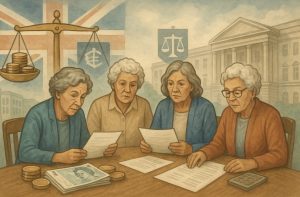
There is no official compensation amount yet, but discussions among campaigners and legal analysts suggest that women may be entitled to anywhere from £10,000 to £20,000, depending on the level of hardship suffered.
Some propose a tiered system where payments vary based on the financial impact on the individual.
The Ombudsman did not prescribe a fixed amount but recommended compensation similar to what is paid in other cases of significant public maladministration.
WASPI’s stance on compensation includes:
- A fair and consistent approach based on degree of hardship
- No requirement to prove financial loss in every case
- A streamlined compensation mechanism to avoid delays
While a successful judicial review will not automatically guarantee compensation, it would remove the Government’s current legal basis for refusing it. This would require ministers to reconsider the situation and potentially open the door to financial redress.
What Can Affected Women Do to Stay Informed or Get Involved?
WASPI urges affected women and their supporters to stay actively involved in the campaign. Awareness and public pressure are vital to maintaining momentum, especially during ongoing legal proceedings.
Women can take several steps to support the cause:
- Sign up for email updates at waspi.co.uk
- Donate to the legal fund through Crowd Justice
- Share campaign content and appeals on social media
- Write to local MPs urging them to support WASPI in Parliament
Many local and regional groups are also holding events and information sessions to help keep communities informed and engaged. The campaign is particularly appealing to families and friends of affected women to show solidarity and help raise funds.
Are There Similar Pension Injustice Cases in the UK?
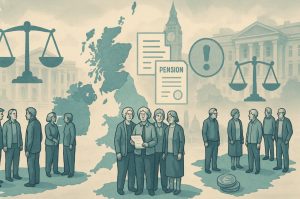
While the WASPI campaign is among the most prominent examples of pension-related injustice, other groups in the UK have also faced challenges due to unexpected policy changes.
Public sector workers, including teachers, NHS staff, firefighters, and members of the armed forces, have all been impacted by controversial changes to pension schemes in recent years.
Some of these cases include:
- Teachers’ pension reform and contribution increases
- NHS staff affected by scheme transition rules in 2015
- Firefighters winning cases over age discrimination in pension changes
These legal outcomes indicate that courts are willing to uphold fairness and accountability in public pension administration. They also highlight a broader issue of how governments manage large-scale pension reform without proper consultation or communication.
Conclusion: Is Compensation a Realistic Outcome for WASPI Women?
The recent judicial review approval marks a turning point in the WASPI movement. While a successful court challenge won’t guarantee compensation, it could invalidate the Government’s current stance and force it to reconsider its position.
For the estimated 3.6 million affected women, this could represent the long-awaited recognition of the emotional and financial damage they’ve endured. WASPI campaigners are closer than ever to holding the Government legally accountable, but public support remains critical.
FAQs
What does the judicial review mean for WASPI women?
It allows the courts to examine whether the Government’s rejection of compensation was legally sound, potentially requiring them to reconsider.
How can supporters contribute to the WASPI legal fund?
They can donate directly through the official CrowdJustice campaign page.
Why is a costs capping order important in this case?
It protects the campaign from being liable for high legal costs if they lose the judicial review, ensuring the case can proceed.
What happens if the judicial review is successful?
The Government would have to withdraw its decision and re-evaluate whether injustice occurred and how to remedy it.
How many women are affected by this issue?
Approximately 3.6 million women born in the 1950s across the UK are directly impacted.
What was the Ombudsman’s main recommendation?
That fair compensation should be paid to the women affected by DWP’s maladministration.
Are MPs supporting the WASPI campaign?
Many MPs across parties have expressed support, but government-wide backing is still lacking.

